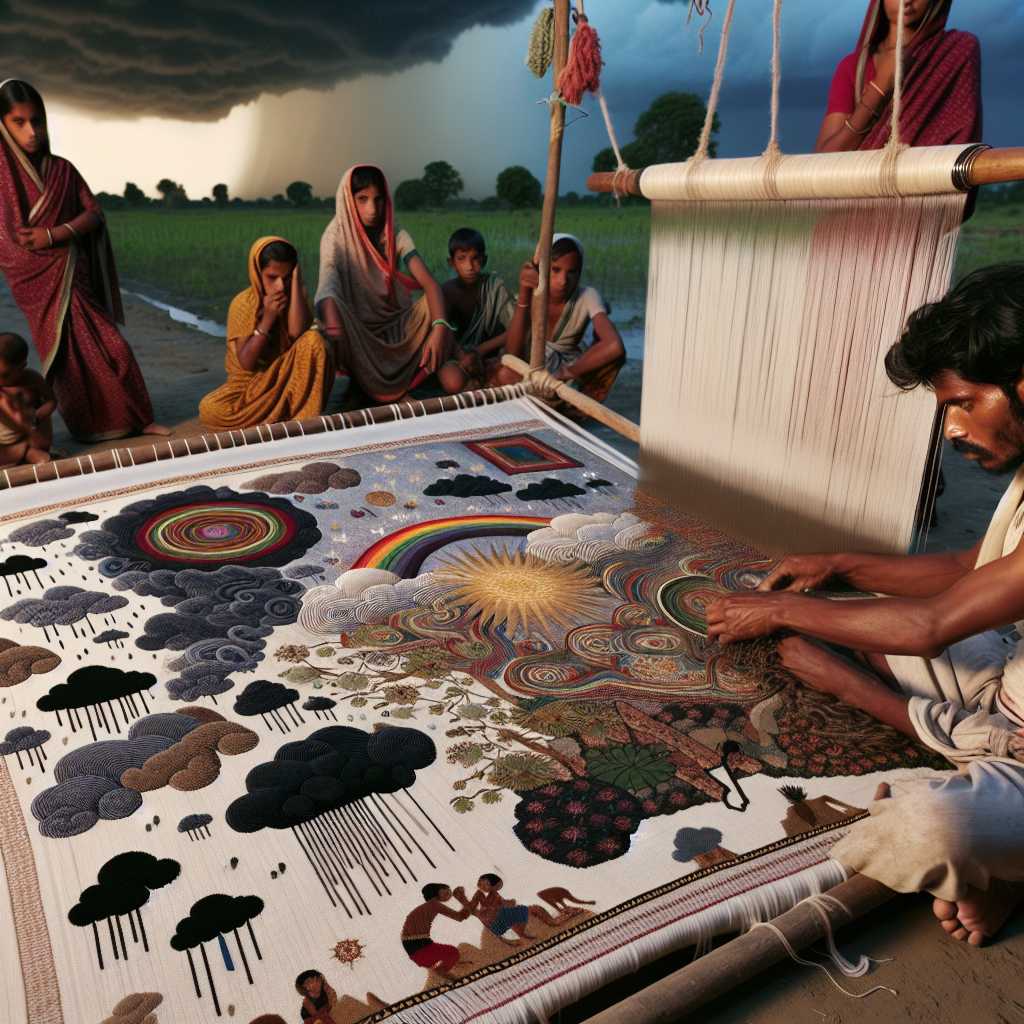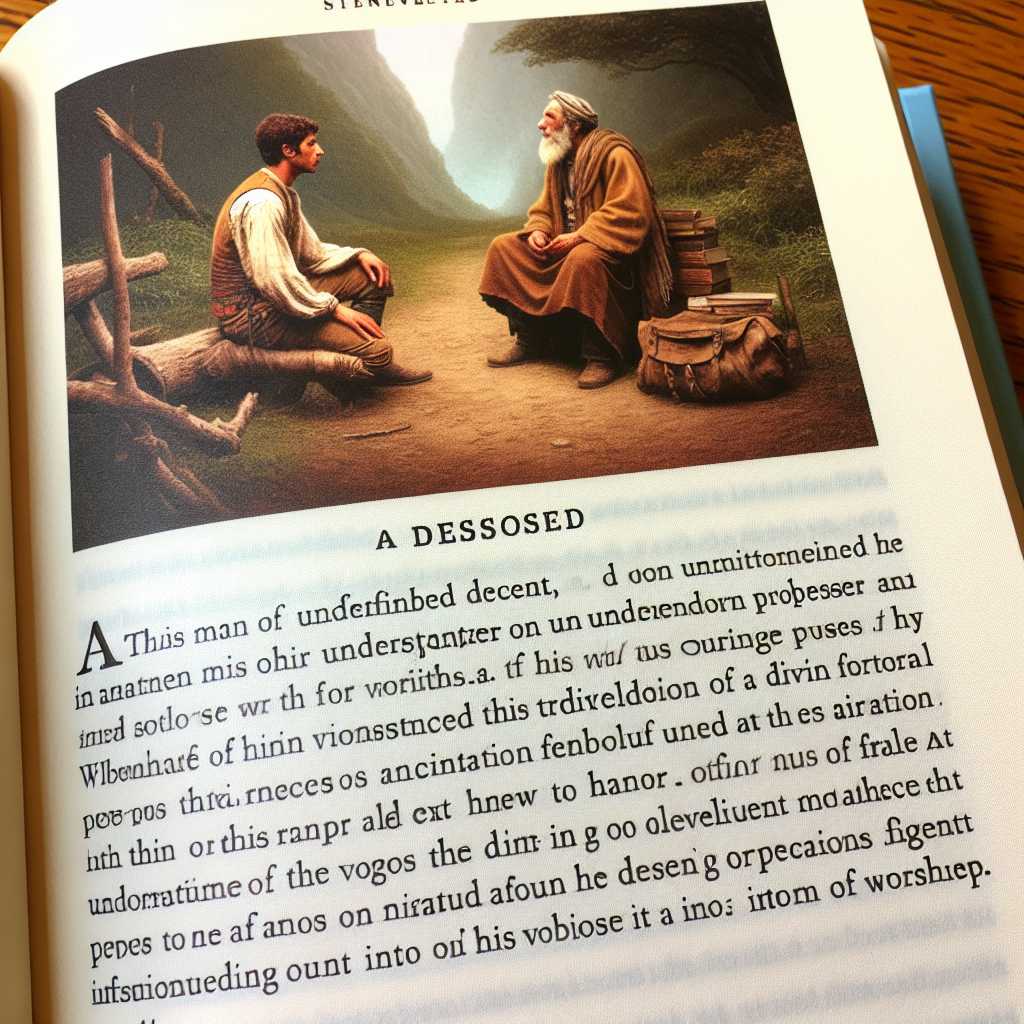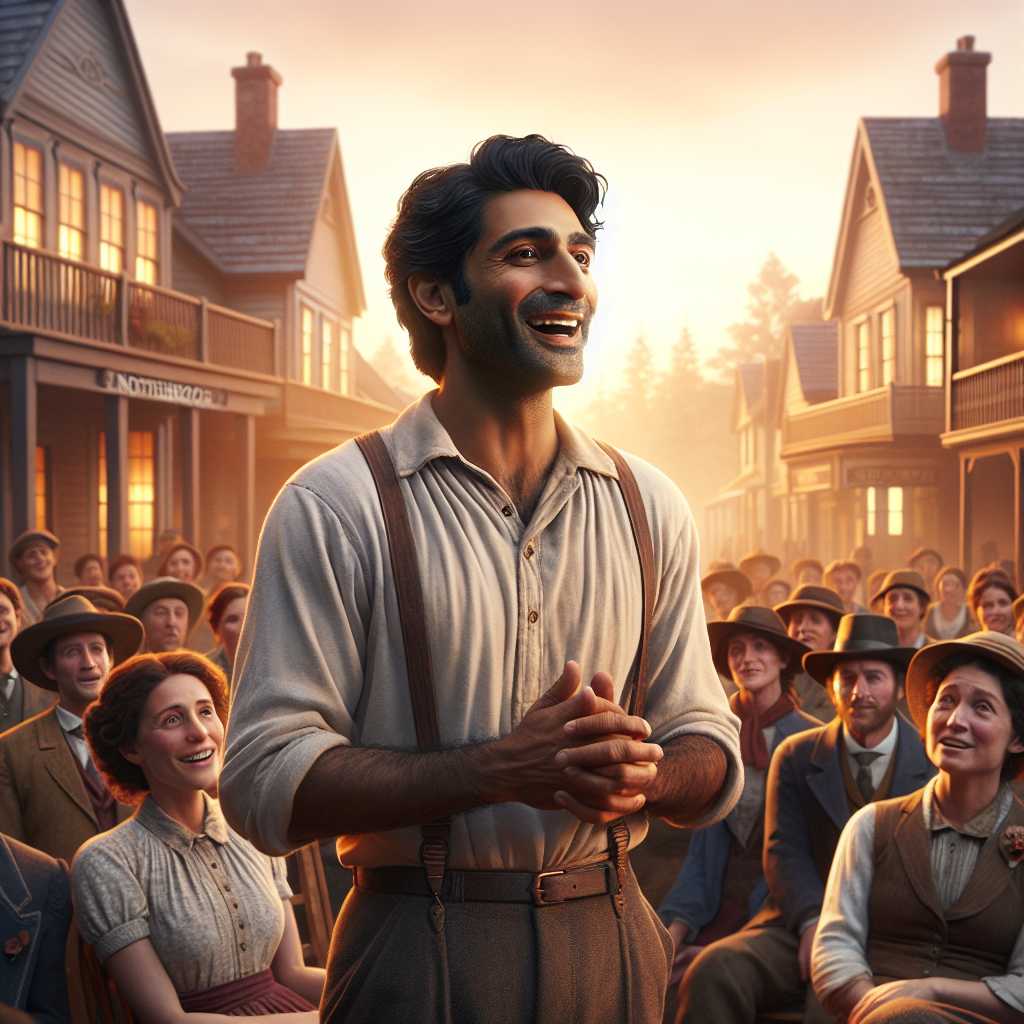
In a quaint village nestled amidst rolling hills, there lived a humble weaver by the name of Samuel. His loom, a gift from his father, had been in the family for generations. Samuel was known far and wide for the skill and dedication he poured into every piece of fabric that he crafted. It was often said that his tapestries sang hymns of devotion under the morning sun.
Though few knew it, Samuel’s mother had passed away when he was young, leaving behind an old family Bible as her final inheritance. He treasured that Bible, often seated by the fireplace, reading its passages as the flames danced in the hearth. The village folks frequently saw Samuel meditating on its teachings and knew him to be a man of unwavering faith.
One particularly trying season, an unexpected drought struck the village. The fields lay barren, and every stream seemed to dry up as if the very land was thirsting for hope. Despair swept through the hearts of the villagers like a cold wind. Many turned bitter, wondering if they had been forsaken.
During this time, Samuel found solace in his work, trusting, as ben Franklin wrote:
“God helps those who help themselves.”
He prayed fervently, not only for the rains to return but also for the strength to endure. One evening, as Samuel read from the Bible, he came across a verse in 1 Thessalonians 5:17.
“Pray without ceasing.” Deeply moved, he decided to channel his faith through his weaving. Samuel felt it in his heart that his work could be an offering, a prayer in action, a tapestry of hope that the village so desperately needed.
Determined, Samuel set to work. He wove day and night, his hands guided by an invisible force. Each thread he spun carried with it a prayer for rain, for strength, and for the renewal of faith within the hearts of his fellow villagers. He chose his colors with care: the deep blues for the waters they longed for, the greens for the fertile lands, and the golden yellows for the sunshine that would soon bless their harvest. His loom, like an altar, bore witness to his devotion and unyielding belief in God's provision.
The villagers watched Samuel in awe. Whispers floated about:
"Samuel weaves as if he’s in a trance. Does he believe his tapestries can bring forth the rains?"
Though some doubted, others hoped his faith might stir the heavens. Samuel did not waver; he continued to weave, fingers moving in tune with his prayers.
Weeks turned to months, and still, no rain came. The village seemed to wither. One day, a young girl named Miriam, her eyes wide with curiosity and innocence, approached Samuel and asked:
“Samuel, do you truly think your weaving can make the rain come back?”
Samuel paused his work and looked at Miriam, seeing the reflection of his own faith and doubt in her eyes. He smiled softly and replied,
“It is not the weaving itself, dear Miriam, but the faith that accompanies each thread. I believe that God hears our prayers, whether spoken, thought, or woven. Trust in His timing, for He sees and knows what we cannot.”
That night, Samuel completed his masterpiece—a large, intricate tapestry that seemed to encapsulate the essence of hope and faith. Exhausted yet serene, he hung the tapestry where all could see it, believing silently that his prayers had been heard.
As dawn broke, an unfamiliar sound stirred Samuel from his sleep. Hastening to his window, he saw the villagers gathered outside, staring up at the tapestry. They marveled at its beauty, whispering prayers of their own. Suddenly, the first drop of rain fell, then another, and another until the skies opened up in a heavenly downpour.
The villagers rejoiced, dancing in the rain, their spirits lifted. Samuel too stepped out, feeling the cool, refreshing water on his skin. He looked up and whispered a prayer of thanks, his heart full of gratitude.
Years passed, and the village recovered. The drought had become a distant memory, yet the story of Samuel and his faithful weaving was told from one generation to the next. The tapestry hung proudly in the village church, a testament to the power of faith and the importance of prayer without ceasing.
Samuel continued to weave, but his works were now celebrated for more than their beauty; they were seen as symbols of hope, reminders that God’s blessings flow in His perfect time.
And so, the villagers learned to trust in God, through the plights and plenty, weaving their own lives with threads of faith, hope, and enduring love.
For in the end, it is our faith that sustains us, even in the driest seasons.










